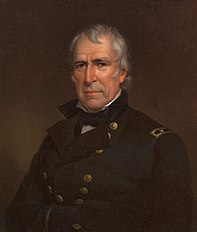 Thanksgiving is only three days away! Children could contribute to the celebration by making a special tablecloth. Give children a paper tablecloth and some festive markers. Place scrap paper under the tablecloth to protect underlying surfaces. Children could draw Thanksgiving foods, symbols, or family likenesses. They could also write messages about giving thanks. Children could read A Turkey for Thanksgiving by Eve Bunting or learn more from the Plimoth Plantation website at: Thanksgiving.
Thanksgiving is only three days away! Children could contribute to the celebration by making a special tablecloth. Give children a paper tablecloth and some festive markers. Place scrap paper under the tablecloth to protect underlying surfaces. Children could draw Thanksgiving foods, symbols, or family likenesses. They could also write messages about giving thanks. Children could read A Turkey for Thanksgiving by Eve Bunting or learn more from the Plimoth Plantation website at: Thanksgiving.

Charles Darwin
Charles Darwin published On the Origin of Species in 1859. The original title was On the Origin of Species by Means of Natural Selection, or the Preservation of Favoured Races in the Struggle for Life. When the sixth edition was printed, the title was shortened to The Origin of Species. The book included information from his time aboard the Beagle expedition in 1830 and other research and correspondence. Children can read The Origin of Species and other books written by Darwin at: Project Gutenberg.

Barbed Wire Patent
Barbed wire was patented in 1874 by Joseph Glidden of Dekalb, Illinois. Ranchers quickly found his invention to be invaluable, and Glidden became very rich. Barbed wire really changed ranching in the West. Young historians could find out the advantages and disadvantages of barbed wire. Children could view his patent at: Barbed Wire Patent.
“Lucy” was found in 1974. Researchers in Hadar, Ethiopia, found hundreds of pieces of bone all from the same skeleton. They named the skeleton Lucy, but her real name is AL 288-1. An Australopithecus afarensis, Lucy is 3.2 million years old. She was about 43 inches tall and probably weighed 65 pounds. Children can visit a fantastic site to learn more at: Lucy.
Frances Hodgson Burnett (born Cheetham Hill, Manchester, England, 1849; died Plandome, Long Island, New York, October 29, 1924) wrote at least 35 books, some of which were works for children and some of which were romantic adult novels. Three of her most famous works for children are Little Lord Fauntleroy, published in 1886, A Little Princess, published in 1905, and The Secret Garden, printed in 1910. The Secret Garden is truly a classic. Carolyn Strom Collins and Christina Wyss Eriksson wrote a wonderful book, Inside the Secret Garden: A Treasury of Crafts, Recipes, and Activities, to accompany the original book. Children can access many of Burnett’s writings at: Project Gutenberg. They can learn more at: Frances Hodgson Burnett.
Carlo Collodi (born Carlo Lorenzini in Florence, Italy, 1826; died Florence, Italy, October 26, 1890) wrote The Adventures of Pinocchio in 1883. Children can read his works at: Project Gutenberg.
Mordicai Gerstein (born Los Angeles, California, 1935; died Westhampton, Massachusetts, September 24, 2019 ) wrote and/or illustrated at least 50 books for children. He illustrated the Something Queer Is Going On series by Elizabeth Levy. He received the 2004 Caldecott Medal for The Man Who Walked Between the Towers.
Scott Joplin (born Texarkana, Texas, 1868; died New York, New York, April 1, 1917) was a musician and composer. He was known for his ragtime music.

Statue of Saint Junipero Serra
Saint Junipero Serra (born Majorca, Spain, 1713; died Mission San Carlos Borromeo, California, August 28, 1784) was a Franciscan priest who established the first mission, San Diego de Alcala, in California in 1769. He also created eight other missions in California. He was beatified by Pope John Paul II on September 25, 1988, and canonized by Pope Francis on September 23, 2015.

Zachary Taylor
Zachary Taylor (born Montebello, Virginia, 1784; died Washington, DC, July 9, 1850) was the twelfth president (1849-1850) of the United States. The son of a Revolutionary War hero, he was proud of being a professional soldier. He served in the military for forty years. He was elected to the presidency, although he had no political experience. Nicknamed “Old Rough and Ready,” he died in office after serving sixteen months. He was the last of the presidents to own slaves. Children can visit a website at: Zachary Taylor.
Henri de Toulouse-Lautrec (born Albi, France, 1864; died Malrome, France, September 9, 1901) was an impressionist painter. He often painted scenes about Paris’s circuses, cabarets and nightclubs. Toulouse-Lautrec also made lithographs. Children could view some of his work at: Toulouse-Lautrec.
Yoshiko Uchida (born Alameda, California, 1921; died Berkeley, California, June 21, 1992) wrote 34 books. Placed in internment camps during World War II, Uchida often explored the topics of ethnicity and racism. Her works include A Jar of Dreams and Journey to Topaz: A Story of the Japanese American Evacuation.